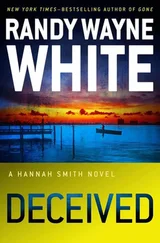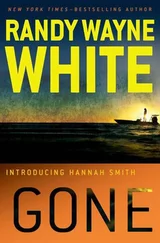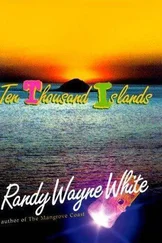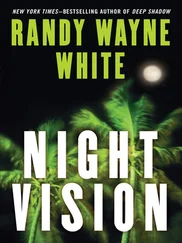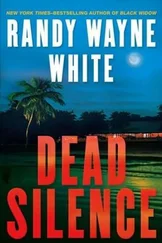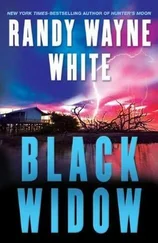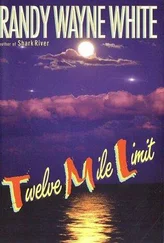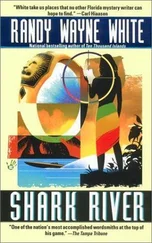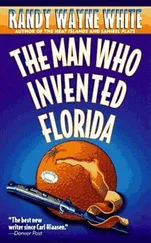
Randy Wayne White
Seduced
The fourth book in the Hannah Smith series, 2016
When the woman saw that the tree was good for food, and that it was pleasant to the eyes, and a tree to be desired to make one wise, she took of the fruit thereof, and did eat, and gave also unto her husband with her; and he did eat.
– GENESIS 3:6
Seduction begins with a fantasy that, pending a willing partner and a safe place, choreographs its own dangerous reality.
– H. M. TOMLINSON
[DISCLAIMER]
Sanibel and Captiva Islands are real places, faithfully described, but used fictitiously in this novel. The same is true of certain businesses, marinas, bars, and other places frequented by Doc Ford, Tomlinson, and pals.
In all other respects, however, this novel is a work of fiction. Names (unless used by permission), characters, places, and incidents are either the product of the author’s imagination or are used fictitiously. Any resemblance to actual persons, living or dead, or to actual events or locales is unintentional and coincidental.
Contact Mr. White at WWW.DOCFORD.COM.
The summer before I started this novel, on a day of ninety-degree heat, two pals and I landed a Maule seaplane in a remote bay and waded ashore to explore the only chunk of high ground for many, many miles. Common sense dictated that a spot such as this would also attract snakes-pythons, in fact-but we were too busy sinking in muck and battling mosquitoes to worry about trifles.
Our intent was to photograph artifacts left by Florida’s pre-Columbian settlers, which we did, but also came away with a bag full of “wild” oranges. These were gathered off the ground because the hammock-an island, of sorts-was such a tangle of thorns and vines, we could not find the tree.
Difficult to imagine? We considered it odd, too, but not until later when we were safely home and had properly rehydrated after a dip in the pool. The oranges, freshly squeezed, helped. Never had we tasted juice like this-superbly sour yet sweet, with a lime-lemon tang. Very different from feral oranges found on islands that had once been farmed. And light-years better than pasteurized juice.
As we rallied, more oddities were jogged from our heat-addled brains. The place we’d been was surrounded by mangrove swamp, fourteen miles from the next chunk of high ground and twenty-one miles to the nearest road. The island, which wasn’t much of an island (three hundred feet long, two hundred feet wide), hadn’t been inhabited since pre-Columbian times, and it had been decades, possibly centuries, since anyone had been boneheaded enough to hack their way into the interior.
What was an orange tree doing there? How had it survived beneath a forest canopy that had obviously won the battle for sunlight? How had it reproduced in isolation? More to the point, why couldn’t we find the damn thing?
There was one troubling detail we’d all noticed, but only subliminally: aside from a big alligator, we had seen no wildlife-no tracks, no scat-in what should have been an animal haven.
Instead, we pondered only citrus-related oddities. We researched every facet of the subject. Well… a couple of us did. My friends, Capt. Mark Futch and Jeff Carter, are unusual men. Mark is a eighth-generation Floridian, a pilot/fishing guide, whose roots are tangled in piracy via the Bahamas and Boca Grande. He has connections in the citrus industry, too. Jeff is a fine writer and historian. His knowledge about all sorts of things, including botany, is beyond my depth, which is why I stick to instigating dangerous trips.
A month of research and much texting ensued. What we learned provided the foundation for this book. What we experienced on our second trip provided a pivotal character in it.
Yes, we returned to that miserable place.
It was August. The temperature was already pushing one hundred degrees by the time we landed. Twenty yards of water separated us from shore, but this time, by god, we were prepared. We’d bought special “mud shoes” (designed to mimic the splaying of a duck’s feet) to skate us over the thigh-deep muck.
Two of us were heavier than ducks. We sank, tried to recover, and sank deeper. One of us might be there yet had he not drawn upon crawling skills learned as a child. Mark veered left, convinced he’d spotted an easier entrance into the mangroves. Jeff veered right, and I followed, which was duck-like behavior, but on my belly, not my feet.
Half an hour later, after hacking our way through mangroves, Jeff and I stopped because one of us was exhausted, and Jeff didn’t look good, either. That’s when we heard Mark scream. A serious scream-some of you will know the difference. Garbled profanities followed.
Jeff, who is from Georgia, looked at me and drawled, “That boy’s hurt bad.”
I feared it was true. Mark was our pilot.
We bulled our way inland through foliage so dense, there was no sunlight. By now Mark was bellowing, “Python… A big f-ing python. It’s chasing me!”
It was true. Well, maybe not chasing him, but it was a great big f-ing python. Two of us were carrying sidearms. When we finally located Mark, one of us shot the thing, but the snake slid off and disappeared. (How my second shot missed is a mystery-the damn thing was thicker than my thigh.)
We spent the next hour moving as quietly as prey, our eyes darting from branches above to the ground below, all because of what, by then, had become a group obsession: an orange tree that, one way or another, dated back to the 1500s and the Spanish Conquistadors.
The tree exists. In this novel, Hannah Smith finds a larger version, but it grows in the same bizarre configuration.
A dark, strange place, that island. It, too, is described accurately in this novel. A third trip confirmed that wildlife there has been decimated by the snake population, but there was one less snake when we left. The skin of a twelve-foot Burmese python now hangs on the wall of my son Rogan’s office-a story I will save for another book.
Before thanking those who contributed their expertise or good humor during the writing of Seduced , I want to make clear that all errors, exaggerations, or misstatements of fact are entirely my fault, not theirs. This applies particularly to those I consulted about orange trees, and the terrible citrus greening disease (HLB).
These generous people include Pamela D. Roberts, Professor, Department of Plant Pathology, University of Florida, who invested her time and trust by helping me throughout this project.
Steve Smith of Babcock Ranch helped a great deal via his primers on citrus farming. Biochemist Gregg Fergus and patent attorney Vern Norviel provided guidance and assistance regarding biotech patents. John Stark, Ph.D., University of California, Davis, and Peggy Sieburth, Ph.D., Florida Department of Agriculture, were also helpful.
Equally as generous were Michael and Margie Bennette, and Brian and Denise Cobb. Their devotion to Florida, and Florida archaeology, are much appreciated. Ms. Liesa Priddy, Collier County native, and a respected board member of the Florida Wildlife Commission, once again provided advice and information on the fascinating area that is her home. The fine ladies of the Arcadia, Florida, Book Club kindly suggested where Hannah and Roberta should converse over lunch and tea.
Insights, ideas, and medical advice were provided by doctors Brian Hummel, my brother Dan White, Marybeth B. Saunders, and Peggy C. Kalkounos, and my amazing nephew, Justin White, Ph.D.
Читать дальше


